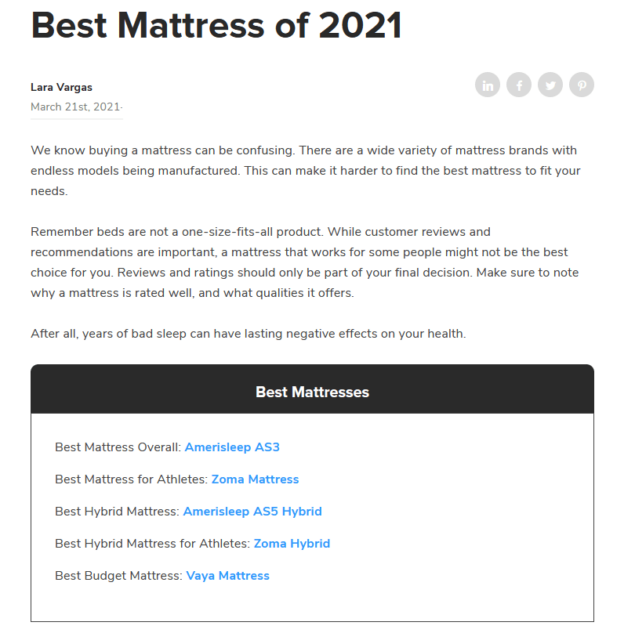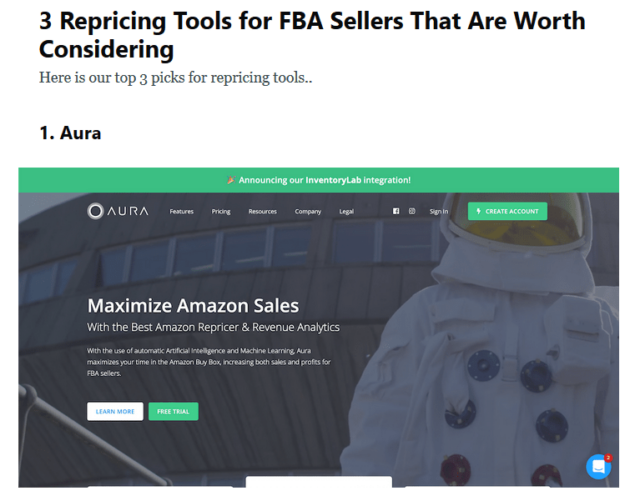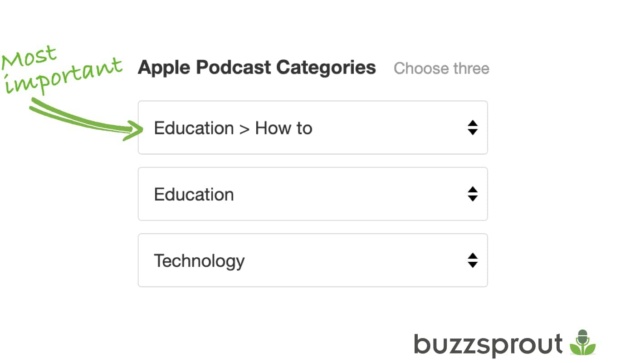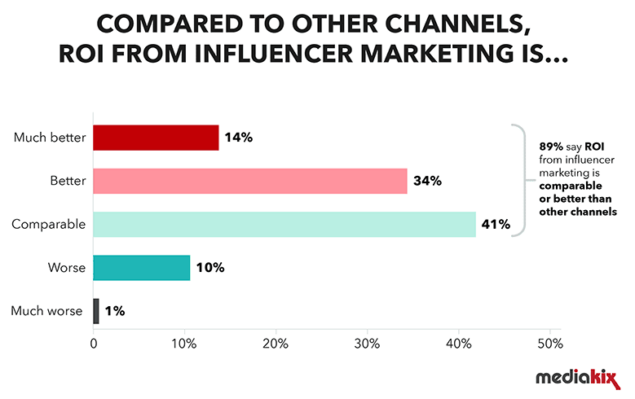If you’ve been involved with ecommerce for any length of time, then you probably understand that not all marketing channels are created equal — some of them work better than others.
Worse yet, what worked yesterday might not work tomorrow and markets saturate quickly. To keep up with these changes, you need to run continuous tests and experiments, which can rack up a price tag quickly.
While that might not be a problem for massive companies with deep pockets, it can be a nightmare for the rest of us. How are you supposed to decide where to invest resources?
We know how hard it is to navigate this arena, so we’ve done the legwork for you. Here is a list of eight marketing channels that work great for ecommerce. No fluff, just the essentials.
1. SEO-driven content marketing
When your potential customers have a problem, what do they do?
They Google it, of course.
Research from Pardot shows that roughly 7 out of 10 customers start researching solutions on Google. This is where content marketing comes in — by publishing high-quality content that answers questions and presents solutions to customer problems, you’ll end up on potential customer’s radars.
For instance, take a look at this post from SavvySleeper.

This comprehensive guide covers everything a person needs to know when buying mattresses. If you’re looking for a new mattress and stumble upon that page, you may decide to purchase one from SavvySleeper since they have already given you credible information on the topic.
Here’s another great example from Aura:

When you want to fuel a desire for your products, comparison content is your best bet. By writing an unbiased review of your product and your competitors, you come across as trustworthy and reliable.
But content marketing isn’t just about writing blog posts. You can also put together information pages to give potential customers more context about your products.
For example, Joy Organics excels at this, using its product landing pages to funnel traffic to relevant internal links that lead to blog or checkout pages.

Now, here’s the catch: creating content isn’t enough.
To get traction, you need to make sure that your prospects find your content in their search results. To do this, you should optimize each blog post for search engines.
On-page SEO optimization helps search engine crawlers know what your content is all about. These bots determine whether your content should be listed as a relevant search result for people searching for topics your content covers.
Here’s a quick five-step approach:
- Do keyword research to identify topics your audience is looking for (you can use tools like Google’s Keyword Planner or SEMRush to do this).
- Identify the intent and context behind each of these keywords to help you narrow down the most relevant keywords.
- Analyze what your competitors have written about the topic to understand what you will need to stand out.
- Write a blog post on your target keyword and provide enough information to answer the most common questions users are searching for.
- Promote your content with relevant influencers in your industry to get some initial traction and build backlinks.
Keep in mind; content marketing will likely be “slower” than other channels.
But that doesn’t mean you should ignore it.
In the long run, content marketing will position your brand as a leader in your industry and help you attract customers organically.
2. Podcasting
Your audience probably contains different types of learners, including readers, watchers, and, of course, listeners. To get the most out of your marketing efforts, you must tailor your content to fit the different learning styles of your audience.
Here’s where podcasting comes in.
In the words of Buzzsprout writers:
“Instead of the fractured connection you make through social media, podcasts allow you to engage your audience with unique long-form content. Podcasts are more convenient than blog posts; people can listen to podcasts while driving, working out, or just doing chores around the house.”
And here’s the best part: Apple Podcasts, being the largest podcast directory on the web, has expanded its categories.

Nowadays, there’s is no shortage of categories to choose from when trying to list your show. And considering that 52% of podcast listeners use Apple podcasts on their phones, you might get massive exposure to your target audience.
That said, here’s how to get started podcasting:
Step 1: Identify top podcasts
Before you start your show, identify three to five podcasts relevant to your prospects and appear as a guest on these shows. Through these appearances, you’re building credibility and gaining a passive audience at the same time.
The show notes from these podcasts will also have links pointing back to your store. It’s probable that listeners will click on these links to get to know more about you.
Step 2: Submit your podcast to popular directories
Once you start your show, submit it to Apple Podcasts, as well as other major podcasting directories, like Spotify, Stitcher, and Google Podcasts.
To avoid losing momentum, be sure to mention the best content in your blog for at least the first few episodes. Then reach out to your listeners to learn more about what they’re looking for.
Step 3: Interview relevant people in your industry
Interview influencers in your niche to increase your awareness and reach. These interviews offer you an opportunity to access broader audiences because guests are likely to share the interview with their own followers.
3. PPC advertising
It’s not a secret that PPC platforms, like Facebook Ads or Google Ads, have been a major channel for ecommerce businesses over the last few years. But things are changing, and PPC is evolving.
With the increasing volume of advertisers and short attention span of users, getting a great ROI from PPC ads is becoming harder by the day.
The two main reasons for this include:
- Advertising costs increasing exponentially
- Consumers tuning out of advertisements due to ad fatigue
Now, does that mean you shouldn’t use PPC for your business?
Not quite.
PPC can still be very profitable… if you approach it the right way.
Here’s how:
- Create a content-driven campaign: Instead of promoting your products directly, create a campaign to promote your blog posts. This way, you’ll reduce your CPC (Cost Per Click) while building trust with your audience.
- Leverage retargeting: Most PPC platforms allow you to create custom audiences based on previous visits, which often convert better than “cold” audiences.
For instance, Codeless, a US-based content marketing agency, saw these results after running two campaigns. One campaign was for a custom audience, and the other was for a cold one.
As you can see, the results speak for themselves.
Do you have blog content talking about your products? Promote it to your custom audience on Facebook or Google, and you may find yourself reaping the rewards.
4. Email marketing
Despite the emergence of a myriad of communication channels, email is still king. Email drives an average ROI of 73%, compared to SEO and SEM, which have an average ROI of 72% and 67%, respectively.
Besides, 61% of buyers prefer hearing from you through email. If you do it right, you can turn email into a powerful marketing channel for your business.
So, how can you use email to drive conversions?
Once your prospects sign up for your emails, run a welcome email series to introduce them to your brand and let them connect with your culture.
Remember to set expectations with your subscribers. For instance, email them frequently, ask them to whitelist you, and make an excellent first impression by offering discounts or special deals.
You should also segment your leads to offer a more tailored experience.
For example, new subscribers might need a nurturing series that includes comparison content and customer testimonials to help them see your product’s value.
Your customers, on the other hand, need other types of content, like updates on relevant products, flash sales, or coupons. It’s also important to keep your product quality management system updated every time you roll out a new or improved product.
Finally, follow up with leads who abandon their carts in your store. Sometimes life gets in the way, and all they need is a friendly nudge to complete their purchase.
5. Influencer marketing
If you watched 2021’s Super Bowl ads, you might have noticed a trend: most of them tapped influencers to endorse products.
- Cheetos used Ashton Kutcher and Mila Kunis
- Rocket Mortgage ran a commercial featuring Tracy Morgan, Dave Bautista, and Liza Koshy
- Amazon Alexa went with Michael B. Jordan
- Michelob Ultra featured Serena Williams, Peyton Manning, Anthony Davis, and Brooks Koepka
Why? It works.
Research from Mediakix suggests that almost 9 out of 10 brands say influencer marketing is comparable — or even better — than other channels.

By getting influencers to promote your store, you can drive not only sales but the loyalty of your customers. Now the question becomes: how can you collaborate with influencers?
To be honest, it’s not that hard.
You can start by making a list of the top influencers in your industry and use one of the email finders suggested in this list to find their email address.
Once you have collected their email information, you could simply send them an email like this:
“Hey _____________, I’ve been following your work for a while and really love what you’re doing with [something specific they’re doing].
My name is __________ and I work at ______________. Since you constantly post content on [topic], I thought we could collaborate together. We sell [product] for [specific audience].
Please let me know if you’d be interested and I’ll give you more context.
Thanks,
[Your name]”
6. Performance-based marketing
A few decades ago, advertising was a pretty risky venture. If you wanted to advertise in a popular magazine, for example, you had to pay an upfront fee, create your ad, and pray it worked.
If the ad didn’t work, shame on you. Good luck next time.
In other words, advertisers took all the risk.
But as technology evolved, so did marketing.
With the increasing volume of data available and the growing number of advanced ad platforms, brands now have access to powerful targeting features to reach the right audiences at the right time.
Here’s where performance marketing comes in.
In short, performance marketing is the practice of paying only for results. That is, paying for specific actions, such as getting leads or sales.
To be fair, this isn’t a specific channel, per se. It’s more like an approach to marketing, which might include different channels.
Some of the most popular performance marketing channels include:
- Influencer marketing
- SEM
- Affiliate marketing
- Social media marketing
Any other channel where you can set a specific bid for each action and measure results with accurate data would also be a fine addition to this list.
Instead of focusing on channels where results aren’t predictable and completely measurable, like outbound sales or banner ads, focus on channels where you get full control over your CPA (Cost Per Acquisition).
Just keep in mind that performance marketing should be aligned with your KPIs and marketing goals. A lead-gen campaign will be much different than a to a sales campaign. You should define how much you’re willing to spend to make sure you’re still turning a profit.
7. Social media contests
The word “free” is extremely powerful, as it can drive people to do things they wouldn’t normally do — like camping in a parking lot for 24 hours just to get some free chicken sandwiches.
Every time Chick-fil-A opens a restaurant in a new location, they invite 100 fans to camp outside the restaurant for the opportunity to win a full year of free food.

Reebok’s Tough Viking Competition is another example of this principle in action. In this contest, Reebok offered a one-year sponsorship to whoever got the biggest Reebok logo tattoo.
The craziest part?
Tons of people participated.

Since the word “Free” is so powerful, try using it to promote your ecommerce brand!
Contests and giveaways are great ways to grow your brand through word-of-mouth, as you can offer the opportunity to win something in exchange for a social share.
8. Online marketplaces
Finally, online marketplaces are a great channel to reach customers when they’re looking to buy.
Think about it:
If they’re visiting Amazon or Google Shopping, they’re probably looking to buy something. Putting your products in front of them when they are ready to buy can make it much easier to convert a potential customer.
The good news?
Most of these marketplaces are free (or really inexpensive) and only charge a small commission for every sale you make. This is pretty helpful when implementing performance-based marketing.
Some of the most popular marketplaces include:
- Amazon: The largest ecommerce marketplace in the United States.
- Newegg: Online marketplace designed for tech products.
- Rakuten: Affiliate marketplace for mid-sized to large businesses.
- Etsy: Ideal to sell handmade and vintage items.
- Cratejoy: Marketplace for subscription-based ecommerce stores.
- Facebook Marketplace: Ideal to reach massive audiences through Facebook Ads.
Now, keep in mind this isn’t a comprehensive list of all the marketplaces available. It does, however, cover some of the main ones.
Simply pick one from the list, create an account, and test the channel. Even if you don’t get much initial traction, it costs you almost nothing and will definitely be worth the time in the long run.
Now, your turn to set your marketing channels up for success!
Growing your store isn’t a sprint; it’s a marathon.
Start by asking yourself: What do I need to focus on right now to grow my store in the next few months?
Hopefully, the ideas in this list will help answer that question and start you off on the right foot. The most important thing isn’t getting it all perfect, but just taking action and celebrating even the smallest progress.
Whatever you do, be consistent.
And remember, just because your competitors seem to be doing well on a specific channel doesn’t mean you’ll will too. You never know what’s going on behind the scenes.
Choose a channel from this list and take action — that’s what real entrepreneurs do.




